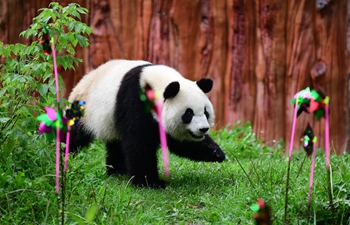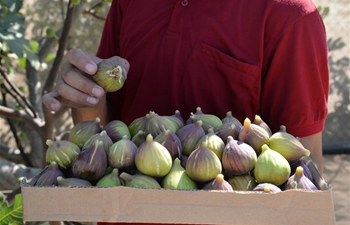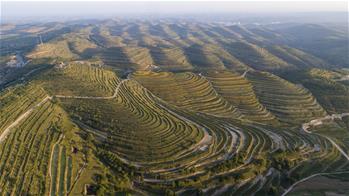NAIROBI, July 30 (Xinhua) -- Kenyan livestock stakeholders ended a two-day meeting in Nairobi on Tuesday by agreeing on a roadmap to help revamp the sector that has the potential to transform the country's economy and pastoralist lives.
The stakeholders said that despite the sector contributing 12 percent to the country's gross domestic product (GDP) and employs 10 million people, there are constraints that hinder its development to produce sufficient beef to meet domestic demand and develop hides and skin.
"We have embarked on improving the genetic pool of Kenyan livestock by investing in artificial insemination and semen development for better beef and skin," Christopher Wanga, director of policy at State Department for Livestock under Kenya's Ministry of Agriculture, Livestock, Fisheries and Irrigation told the meeting.
Wanga noted that the government has also pledged to allocate interested parties farms where they can grow feedlots to avail quality feeds that have been lacking in the country.
The official further noted that arrangements have also been made to establish disease-free compartments and allow private sector with support from the government to export products.
Wanga noted that for once the problem in the sector is expected to be solved and livestock keepers begin to enjoy their hard labor.
"We want to reverse a common knowledge that livestock keepers are the poorest people in the country by offering incentives," he added.
Kenya is the third largest holder of livestock in Africa after Ethiopia and Botswana and livestock keepers are mainly found in 80 percent of Kenya's Arid and Semi-Arid Lands (ASALs) in the northern part of the country.
Adan Haji Yusuf, legislator from Mandera West in northeastern Kenya attributed the slow development in the sector to bureaucratic delays.
Yusuf said that changes made through parliament have delayed the development agenda of the sector because it takes time to be implemented and most of time they collapse by the end of a parliamentary calendar year.
"It is impossible to attract private investors and donors to help develop the sector in the absence of supportive laws," Yusuf added.
But Yusuf observed that there has been a remarkable change in the past 10 years as many farmers have developed a different mindset.
He said that Kenya will only realize the African Union's Maputo Declaration that requires all members to attain 10 percent budgetary allocation to agriculture once livestock sector is given priority through national financial allocation.
Abdirahman Abbas, chief executive of Frontier Counties Development Council (FCDC), a Kenyan think-tank, said it is time to realign strategies to reflect the current governance structures while responding to challenges affecting the livestock sector in the region.
"We need to instill a different mindset on pastoralists to start thinking about commercial livestock keeping as opposed to keeping them for prestige." he said.
Abbas noted that the Middle East countries have ready market for livestock products that Kenya has lost to Somalia.
He said that what livestock keepers need are producer cooperative groups, proper fodder production and financial incentive.
He revealed that FCDC has helped the counties develop a 10-year sectoral development plan that has contributed to the harmonization and development of a common vision, mission and implementation framework.
He said that FCDC has also developed a common framework for diseases control in line with the veterinary policy to guide the efficient and effective delivery of livestock disease control activities.
"We also have a 10 year livestock fodder and pasture strategy to enhance production and utilization of fodder in the FCDC region," Abbas said.
Kenya Pastoralist Parliamentary Group (PPG), a group of legislators, is in the process of legislating the livestock identification and traceability system through amendment to the national health act.
During the 2018 financial year, FCDC counties allocated eight percent of their budgets on livestock and agriculture sector and have recently agreed to increase the budgetary allocation to 10 percent in 2019.
FCDC has developed plans to purchase vaccines, construct veterinary laboratories in regions, construct cattle dips, construct markets, add value to livestock products, pilot breed improvement, pilot fodder improvement, promote bee keeping and lay strategies' on drought contingency.













